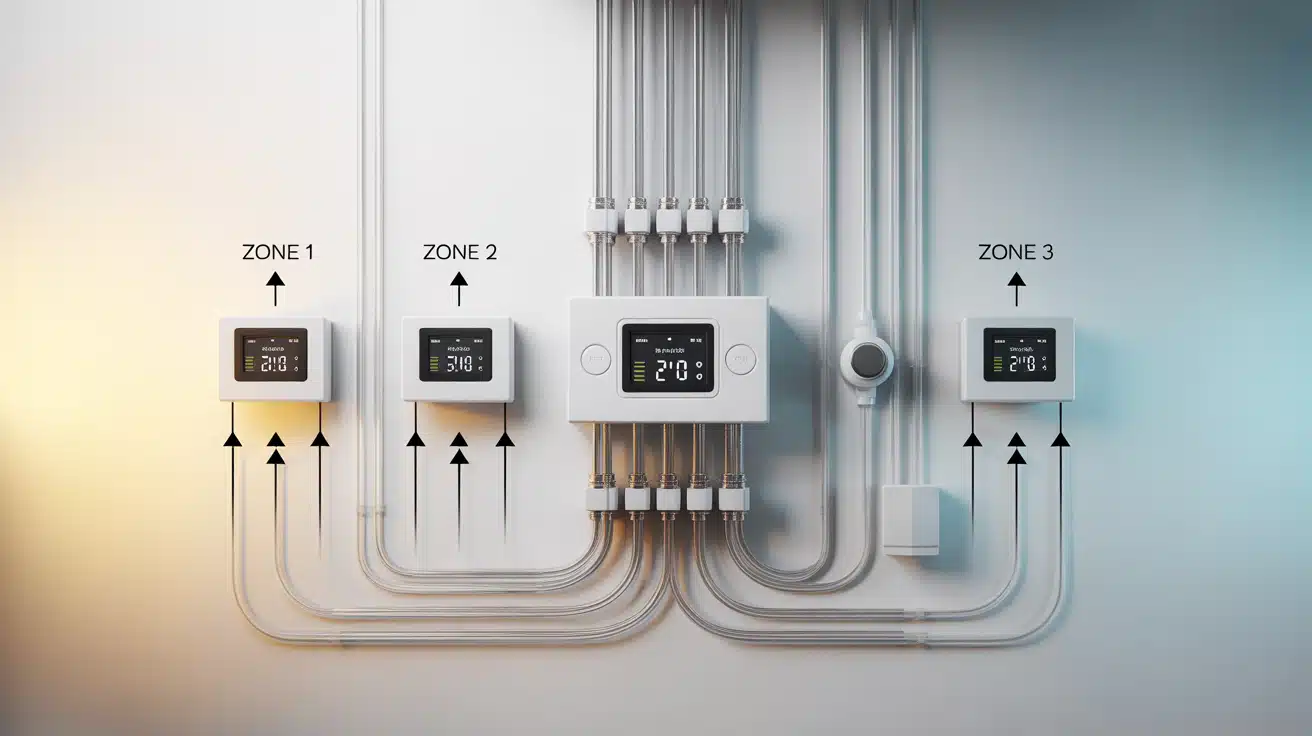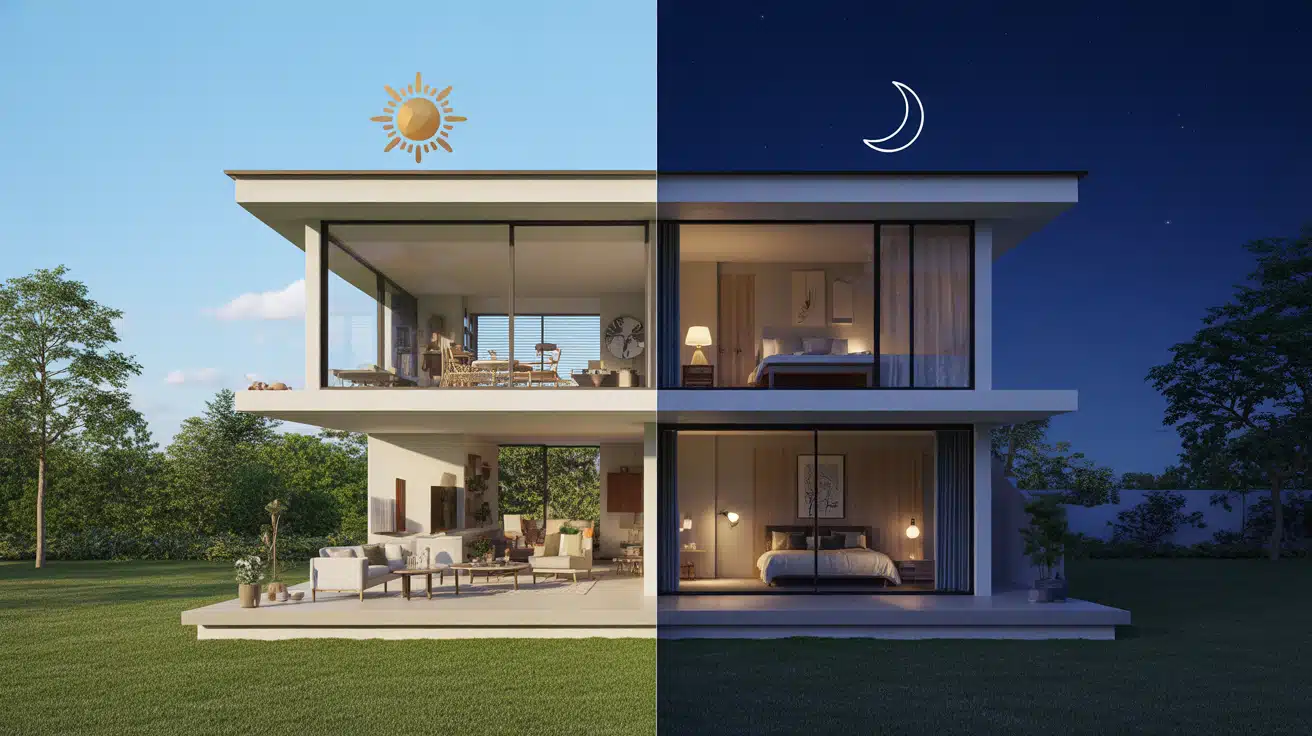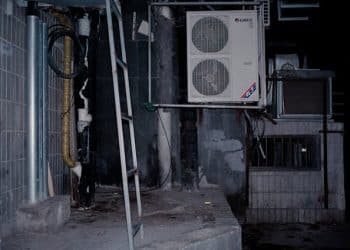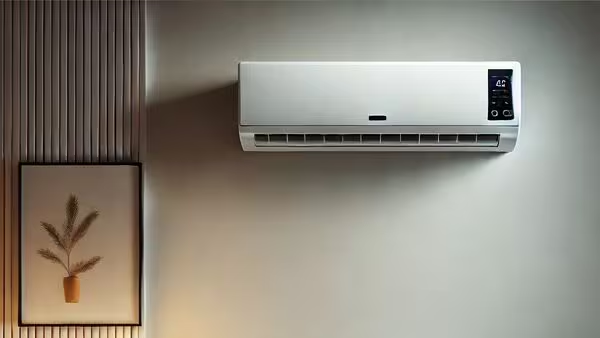Table of Contents
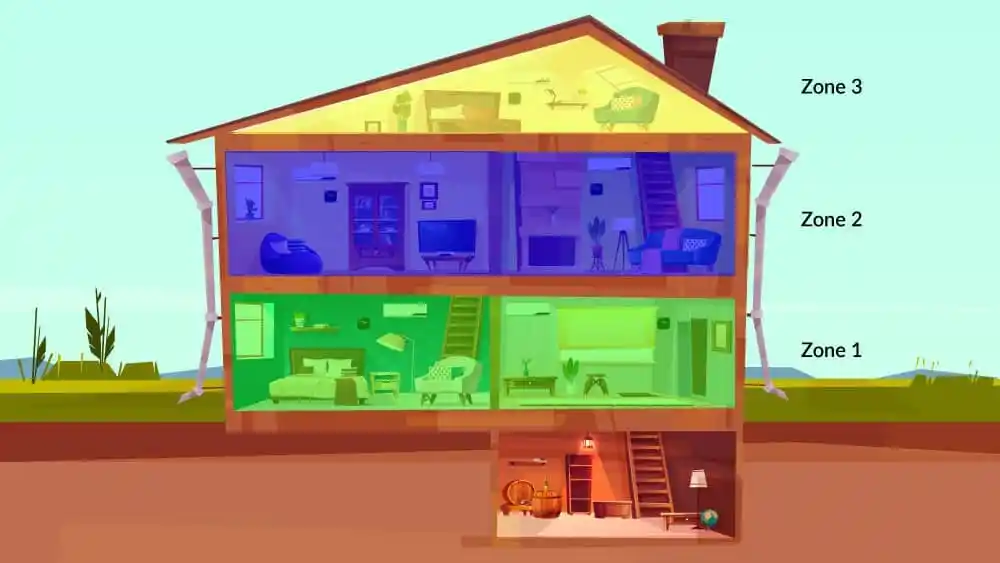
Achieving the perfect indoor climate in large homes can be tricky. One room might feel like an icebox, while another feels like a sauna. Zoning systems are a reliable solution, offering customized cooling for every corner of your home. But what exactly are zoning systems, and how can they help?
This article examines how zoning systems function, their advantages, and why they are an ideal choice for large homes. Whether you’re building a new property or upgrading your current HVAC system, zoning can significantly enhance your comfort.
If you’re looking for customized cooling solutions for your home, be sure to reach out to Mesa’s leading air conditioning company for high-quality service.
What are zoning systems?
Zoning systems divide your home’s HVAC setup into distinct areas, or “zones,” allowing each zone to have its own temperature setting. Instead of a one-size-fits-all approach, these systems employ dampers in the ductwork to control and redirect airflow, providing personalized comfort where it’s most needed.
Traditional HVAC systems often face challenges in keeping a consistent temperature across larger properties due to variations such as sunlight exposure, differences in room insulation, or multi-story layouts. Zoning systems eliminate these challenges, ensuring balanced heating and cooling throughout your home.
Why are zoning systems ideal for large homes?
Large homes typically feature complex layouts, multiple floors, and a variety of rooms that serve distinct purposes. A home office, for instance, needs to stay cooler than a sunny living room, while bedrooms require a completely different climate for a restful night’s sleep. Zoning systems allow you to meet these varying needs seamlessly.
For instance, most experts recommend zoning systems for homeowners prioritizing energy efficiency and personalized comfort. With advanced HVAC solutions tailored to the needs of larger homes, their services demonstrate how zoning systems can make all the difference.
How do zoning systems work?
Zoning systems rely on three main components to function effectively:
Thermostats
Every zone is equipped with its own thermostat, allowing you to adjust the temperature to your preference for that specific area. Want your family room at 72°F while maintaining a temperature of 68°F in the kitchen? Zoning makes this possible.
Control panel
The system’s central hub syncs all thermostats and dampers, ensuring the HVAC unit delivers the required airflow to each zone.
Motorized dampers
Located within the ductwork, these dampers open or close to adjust airflow. When a specific zone reaches the set temperature, the damper closes, redirecting airflow to other areas of the home that need cooling or heating.
This level of control is critical for large properties, as it allows homeowners to maintain a consistent level of comfort without wasting energy.
The top benefits of zoning systems
Zoning systems are more than just a convenience. They provide a range of practical benefits, making them ideal for large homes:
1. Enhanced comfort
Maintain the right temperature in each zone. Whether you want a cooler office or a cozier bedroom, you get tailored comfort throughout the day.
2. Energy efficiency
Cooling or heating unused rooms wastes energy and hikes up utility bills. With zoning systems, you can focus your HVAC efforts where needed, reducing energy waste.
3. Cost savings
By lowering energy consumption, zoning systems can significantly reduce your monthly utility bills. Over time, these savings can easily offset the initial investment in the system.
4. Customization
Tailor your air conditioning and heating preferences to your family’s unique needs. You’re not limited to one thermostat for the entire home.
5. Longevity for HVAC systems
Zoning reduces the workload on your HVAC system, leading to less wear and tear. This can extend the lifespan of your system and reduce maintenance costs.
Factors to consider before installing a zoning system
While zoning systems offer exceptional benefits, there are a few considerations to keep in mind:
Initial costs
Zoning systems often require a higher upfront investment compared to standard HVAC setups. However, the long-term energy and cost savings typically make this investment worthwhile.
Professional installation
Zoning systems must be installed by experienced HVAC professionals. Proper sizing and placement of dampers and thermostats are crucial to the system’s effectiveness.
System compatibility
Not all existing HVAC systems are compatible with zoning. You may need upgrades or modifications for your current system to integrate zoning features.
For optimal results, consult a reputable HVAC service provider to assess your home and recommend the most suitable system.
Real-world example of zoning in action
Consider a sprawling, two-story home featuring an open-concept living area on the main floor and bedrooms upstairs. During the day, the homeowners spend most of their time on the main floor, keeping it cooler while reducing energy usage in the bedrooms. The bedrooms are cooled at night for sleeping comfort, while the downstairs areas don’t require active conditioning.
With a zoning system, managing these needs is effortless, creating a balanced indoor environment and optimized energy use.
Is a zoning system right for your home?
Consider a zoning system if you’re tired of dealing with uneven temperatures or skyrocketing energy bills. These systems are especially beneficial for homes with:
- More than 2,000 square feet of space.
- Multiple floors requiring different climate settings.
- Unused rooms that don’t need constant cooling or heating.
- Family members with varying temperature preferences.
Ultimately, zoning systems provide a customized approach to home comfort that traditional systems cannot match.
Conclusion
Investing in a zoning system is an innovative, long-term solution for achieving comfort and energy efficiency in large homes. By tailoring the temperature to suit different areas of your home, you’ll save on energy costs, reduce HVAC wear and tear, and enjoy a more comfortable living environment.

